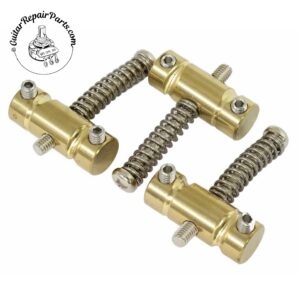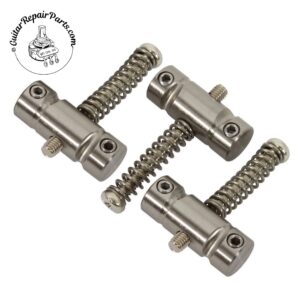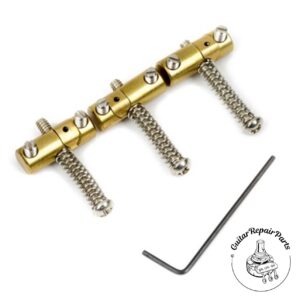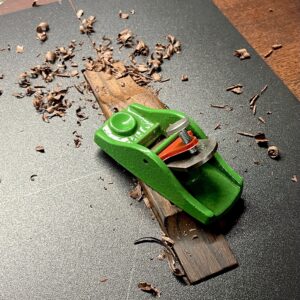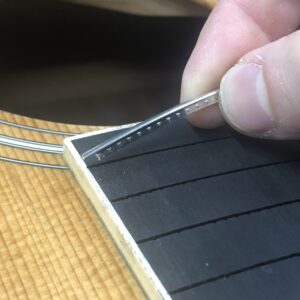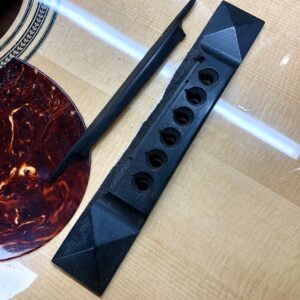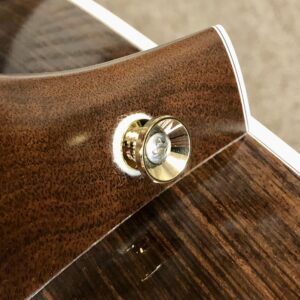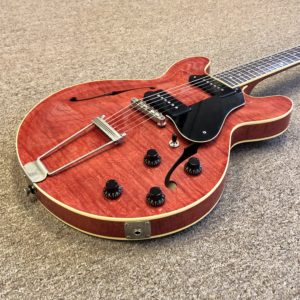Fender Telecaster 3 Barrel Saddles
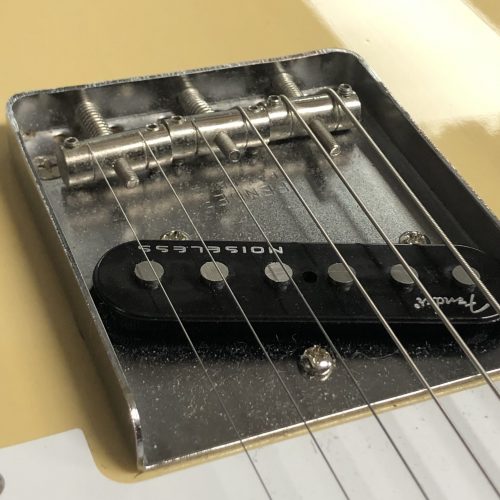
The Birth of the Solidbody Guitar, Lead Guitar, and 'Slinky' Strings
The Fender Telecaster was the world’s first mass produced solid body electric guitar. While its core features have remained remarkably consistent, since the early 1950’s, playing styles and musician’s preferences have changed. At the time that the model was conceived, its role in popular music was largely as a rhythm instrument; Due to the nature of traditional acoustic guitar designs, and the amplification then available, it simply wasn’t loud enough to play above the band as a melody instrument. After the birth of the solid body electric guitar however, playing styles changed: The guitar could be made as loud as needed. “Lead guitar” and rock-n-roll were soon to follow!
Early electric guitars were strung using wire gauges similar to those that are common for acoustic guitars; For example, a typical “light gauge” acoustic guitar string set ranges in thickness from .012″ – .053″. These sets feature wound strings for the 4 lowest pitched strings (E, A, D, G) and plain steel strings only for the top 2 strings (high E and B). As lead playing and string bending gained favor, innovation followed. By the mid 1960’s Ernie Ball had invented and popularized the “slinky” string set. It then became much more common to use extra light strings like the .009 and .010 string sets that are now standard on electric guitars. In addition to their thinner diameter, most electric guitar string sets feature the noteworthy change from a wound to a plain 3rd string.
Fender Telecaster Electric Guitar Intonation and Compensation
Since the guitar’s frets are fixed in a straight line for all six strings, but each individual string’s thickness and pitch are varied, playing in tune across all of the positions of the fretboard requires adjusting the location of the saddles on the bridge; This is called “compensation”.
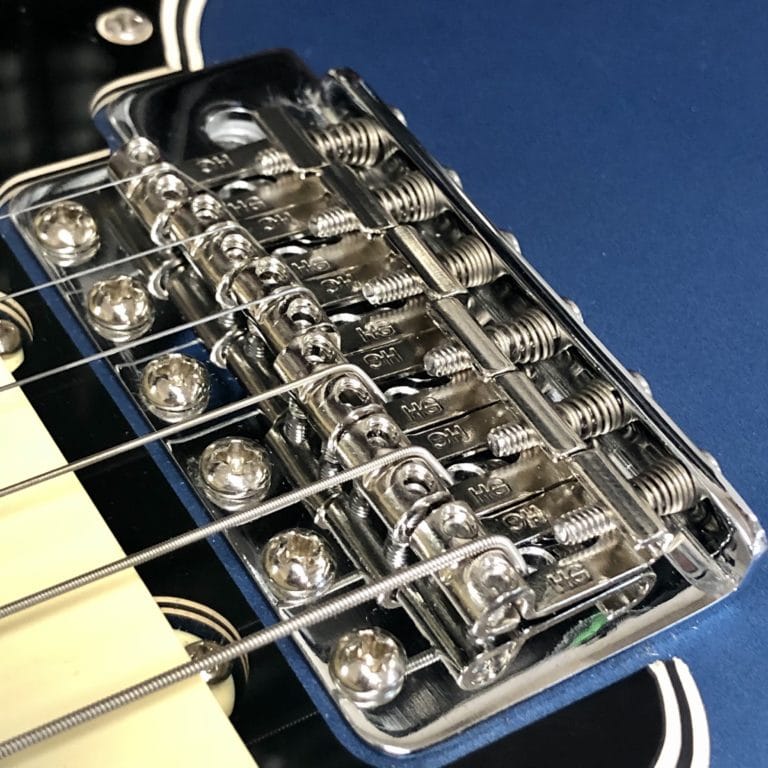
The Fender Stratocaster with Highwood saddles pictured is an excellent example of compensation and the typical pattern that it follows.
The saddles for the guitar’s first 3 plain strings are each adjusted progressively further back relative to one another. The 4th string brings the saddle forward, before once again moving backwards for the 5th and 6th strings.
The 3 barrel design of Telecaster bridge saddles reflect its history: At the time, the upper frets didn’t see nearly the use that they often do now and upper register intonation was not as critical. Though Leo Fender’s original design does feature intonatable saddles, the strings are adjusted together in pairs. The 5th and 6th strings move together, as do the 3rd and 4th, and 1st and 2nd. As such, during a setup, the placement of each saddle must be a compromise between the ideal location for either of the two strings. This is particularly problematic for the 3rd and 4th strings, since, when using modern string sets, a wound and a plain string share the same saddle.
While this level of adjustability was itself an improvement over some earlier fixed position saddle configurations, for the most accurate intonation, individual string adjustment is ideal. This fact is evident in the switch to individual string saddles that was employed in Leo’s design of the Fender Stratocaster only a few years later. Even many later versions of the Telecaster often feature a modified 6 saddle style bridge.
Be that as it may, many vintage Fender guitars, as well as current “vintage inspired” models, feature the original bridge configuration. As a result, these instrument’s are limited in their range of intonation. For many, this shortcoming is of little consequence. Discerning players, however, may become frustrated by the guitar’s comparatively poor intonation.
Telecaster Compensated 3 Barrel Saddle Upgrade
There is an easy upgrade option that can dramatically improve the intonation of 3 barrel saddle equipped Fender Telecaster guitars without significantly altering the look or originality of the instrument: Compensated 3 barrel saddles. Compensated Telecaster saddles overcome the limitations of shared saddles in one of two ways. While each string will still not be individually adjustable, the strings will sit at predetermined intervals, much like a compensated acoustic guitar saddle, that are much more conducive to accurate string-to-string intonation.
Gotoh In-Tune Compensated Telecaster Saddles
Gotoh’s “In-Tune” saddles are available in either brass or titanium. They improve intonation by way of carved lines in each barrel that alter the point at which the string makes contact. Since they are notched, these saddles also offer a more consistent string spacing vs a plain barrel.
Fender Adjustable Intonation Telecaster Saddles
Fender’s Movable Intonating Tele Saddles provide another great option. Each brass barrel has a threaded insert that allows a portion of the saddle to be moved and locked into the desired position. While a bit more finicky to install and adjust, this style of saddle allows for a full range of intonation adjustment on par with that of a six saddle bridge.
Joe Barden Compensated Telecaster Saddles
Joe Barden saddles are made of brass with a screw mounting hole that has been drilled at an angle. With this simple change, the ends of each of the saddles are no longer in the same plane; Forcing the two strings to be positioned differently even though they share a common saddle. These were a popular option for a time, but seem to have wained in popularity in recent years.
Vintage Spacing
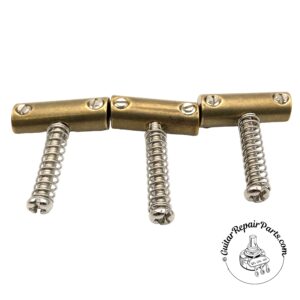
American Standard Series

Installing Replacement Telecaster Saddles

The stock saddles on this instrument feature the original, non compensated, 3 barrel style design. Since the client was unhappy with the intonation on this guitar, it is a perfect candidate for new saddles.
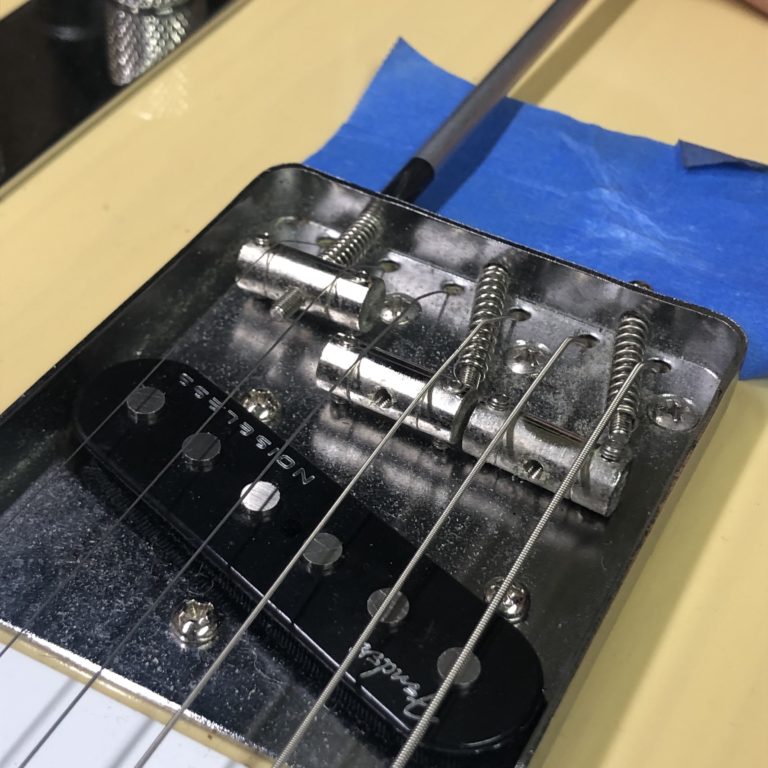
With the use of an appropriately sized Philips screwdriver, removal and replacement of the saddles is a quick task.
We leave the original strings on so that we can “ballpark” the intonation before changing to a fresh set during the setup.
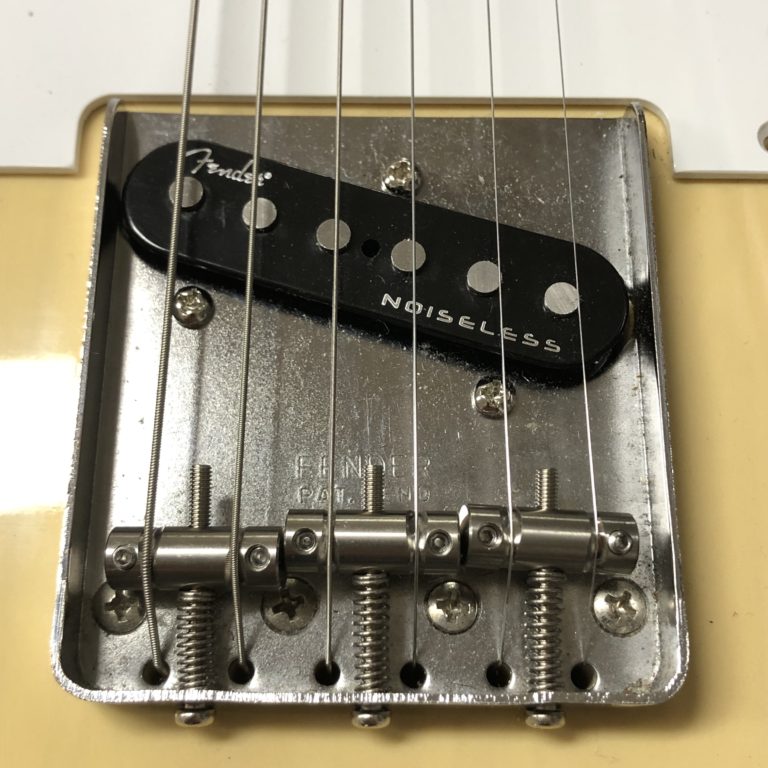
With the replacement saddles installed, careful observers will notice that the strings do not leave off from the same spot on the saddle as their saddle mate.
This small change allows for more accurate intonation of both strings while retaining the shared adjustment screw and the original look.
Thanks for reading! If you liked this article, please check out one of our other favorite upgrades for the Fender Telecasters: Electrosocket Jack Upgrade.

Erik Salomon - Calico Guitarworks Owner / Head Technician
Tech Talk articles are part of an ongoing effort to provide clear and detailed answers to common questions about guitar maintenance, modifications, and repairs.
While not intended as a step-by-step guide to servicing your own instrument, we hope that you will find value in the information provided.

Great Repairs Start With The Right Parts
Many of the parts mentioned in our blogs are available for purchase at:
GuitarRepairParts.com
Enter the code "TechTalk10" at checkout for 10% off your first order.
About Calico Guitarworks
Calico Guitarworks is the area’s premier destination for fretted musical instrument care and maintenance. Owned and managed by Erik Salomon, the shop is dedicated to providing quick, honest and reliable service. The staff at Calico Guitarworks has a combined 25+ years of professional guitar repair experience. Sharing the knowledge that we accumulate in this focused pursuit is at the core of what we do. Learn more About Calico Guitarworks, explore our Frequently Asked Questions, or Contact us with a specific request.

